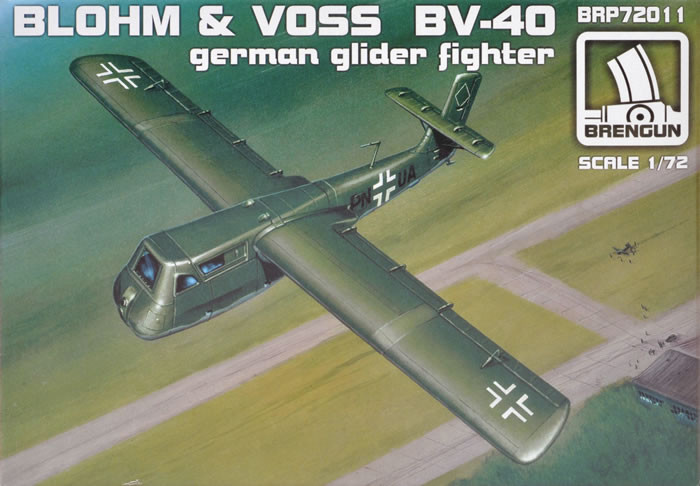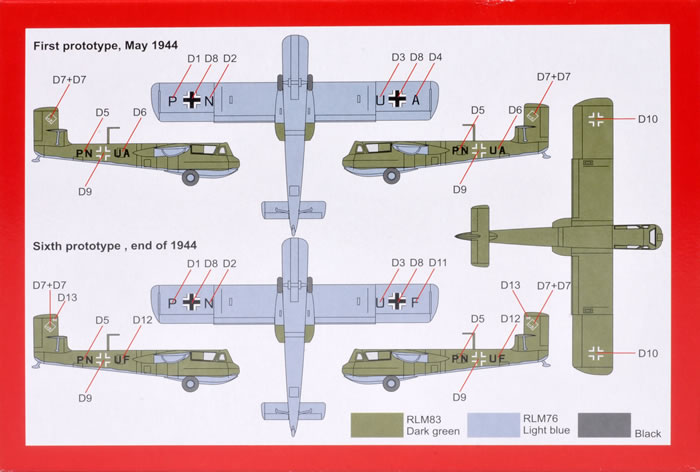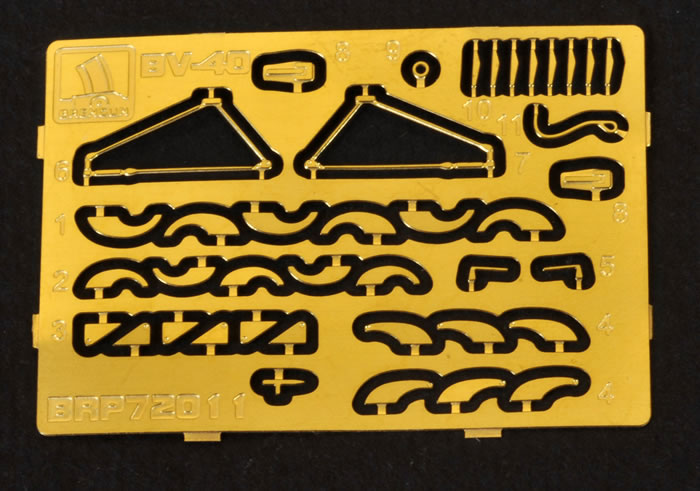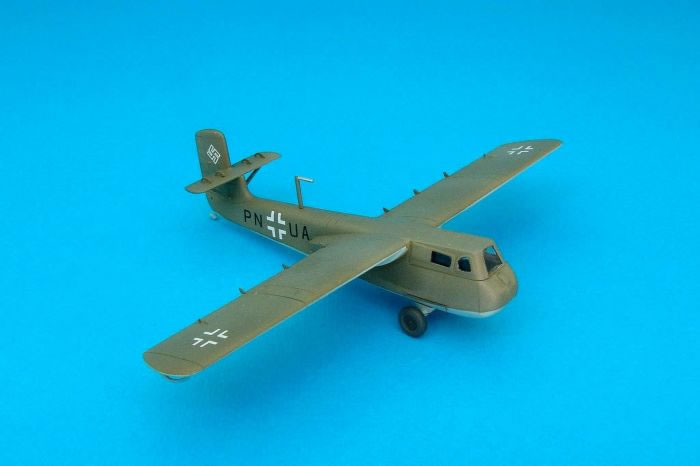Blohm & Voss Bv 40

Brengun, 1/72 scale
S u m m a r y : |
Catalogue Number: |
Brengun Kit No. BRP72011 - Blohm & Voss Bv 40 |
Scale: |
1/72 |
Contents & Media: |
22 tan and one clear styrene parts, one PE fret of 41 parts, and decals for two subjects. |
Price: |
Available from these on-line stockists:
|
Review Type: |
First Look. |
Advantages: |
Good scale finesse engendered by many small PE partss. |
Disadvantages: |
Some will hate the small PE parts. |
Conclusion: |
The BV 40 is an obscure subject, but judging by the previous number of kits released previously, it must have some sort of following. I think those that the subject appeals to will welcome this modern limited-run kit.
The styrene parts are nicely produced and simple to assemble. Care, magnification and patience will be needed to manage the PE, but the result will be worth the effort for the added scale finesse it will bring to the model. I accept that some modellers hate PE, but I almost think you could leave the smaller parts off without detracting too much from the finished article.
I am happy to recommend this kit. |
Reviewed by
Mark Davies

Sword's 1/72 scale Ki 44 Shoki is available online from
Squadron.com
The key features of this small and spartan-looking aircraft were a very narrow and fairly heavily-armored cockpit, and two 30 mm (1.18 in) MK 108 cannon in the wing roots with very limited ammunition. The undercarriage would be dropped after take-off and the plane would later land on a skid. Owing to war-related priorities, the fuselage was constructed almost entirely of wood in order to save strategic materials. The plane was also designed to be built in as short a time as possible by non-skilled workers.

This aircraft would have been towed in pairs by a Messerschmitt Bf 109 and released above the Allied bomber combat box. Once released, it would glide at a sharp angle towards the enemy bomber fleet. During its short attack time, the BV 40 would fire its weapons, and then glide back to earth. The idea of carrying a bomb on a cable behind the glider was briefly considered. By eliminating the engine and positioning the pilot in a prone position (i.e., lying on the front), the cross-sectional area of the aircraft was much reduced, making the BV 40 harder for bomber gunners to hit.
The first flight was in May 1944. Several prototypes were completed, but the project was stopped later in the year as the end of the war drew near.
Owing to the potential dangers for the pilot inherent in the operation of this precarious aircraft; the BV 40 is sometimes listed as a suicide weapon, but it was not intended as such.
Source: Wikipedia
Previous 1/72 Scale Bv 40 Kits
Despite being a mad idea and a militarily insignificant design, I am aware of no less than seven previous Bv 40 kits in The One True Scale! These are from Airmodel, Hobbymodelbau F Schmidt, KPM Korcise/Airplanes, Victoria Products, all vac-forms; two resin kits from CMR and WK Models; and a single limited-run styrene kit from Warlord.
Given that the above kits are all about as obscure now as the subject they represent, I guess it could be argued that a more modern limited-run Bv 40 is about due. Obviously, Brengun thought so, although it fits with their penchant for Third Reich weapons of desperation, having already given us kits of the Ba 349 Natter and Wasserfall Surface-to-Air missile.
Contents
The kit comes in a small end-opening box with simple artwork on its front, whilst the painting and decal guide consisting of four-view colour plans is on the rear. Paint colours are in Czech and English, and cross-referenced to RLM codes where applicable.
The instructions have a parts map and use a diagrammatic format that is easy to follow. There are a few written instructions in Czech and English; but few are required, so simple is this kit.
The parts come enclosed in a zip-lock bag, with the clear and PE parts are further enclosed in a small bag of their own. There is one grey sprue of airframe parts with cleanly moulded parts and acceptably small sprue gates, plus a single clear part and a PE fret; both also nicely produced.
The Kit
Assembly of the kit is straightforward and conventional. It starts with the cockpit interior that that has basic detail for the prone pilot, but I doubt anything will be seen through the very small clear areas.

The small wings fit with simple butt joints either side of the fuselage, whilst the tailplane sits atop the forward fin braced by two struts. An axle, two wheels and a ski form the jettisonable undercarriage used for takeoff, plus a tailskid. The two cannon breech fairings fit under each wing-root. A couple of curved wingtip out-riggers and the clear canopy complete the styrene parts tally. So far, this will have been a very easy build indeed.
There are a few small and quite fine PE parts. There are two coat-hanger shaped braces that fit between the fuselage and main wheels, a pitot, towline link, and two small slotted panels that fit behind the cockpit on the top of the fuselage. The remaining PE parts cater for rather a lot of control surface and flap actuators, and flap hinges. Care and patience will be needed with these small parts.

Overall, I think this should be a simple and enjoyable kit to build.

The images of the assembled unpainted and painted models accompanying this “First Look” are from Brengun’s website.
Marking Options
The kit offers two colour scheme options.
One is for the first prototype, PN+UA in May 1944; and the other is for the sixth prototype, PN+UF at the end of 1944.
The decals appear to be well printed and include split swastikas.
The BV 40 is an obscure subject, but judging by the previous number of kits released previously, it must have some sort of following. I think those that the subject appeals to will welcome this modern limited-run kit.
The styrene parts are nicely produced and simple to assemble. Care, magnification and patience will be needed to manage the PE, but the result will be worth the effort for the added scale finesse it will bring to the model. I accept that some modellers hate PE, but I almost think you could leave the smaller parts off without detracting too much from the finished article.
I am happy to recommend this kit.
Thanks to Brengun for the review sample.
Review Text & Blue Background Images Copyright © 2014 by Mark Davies
Page Created 23 April, 2014
Last updated
23 April, 2014
Back to HyperScale Main Page

|
